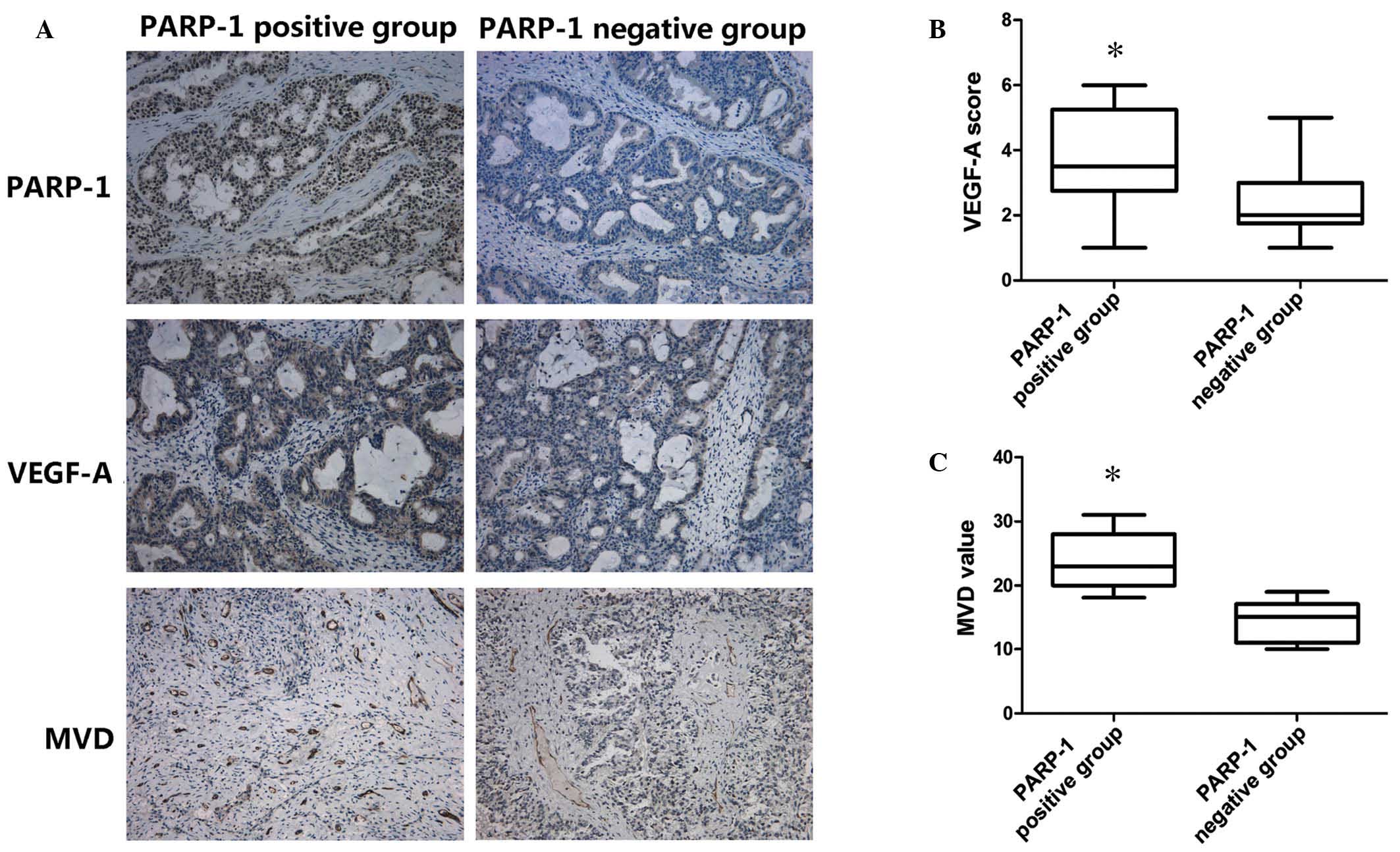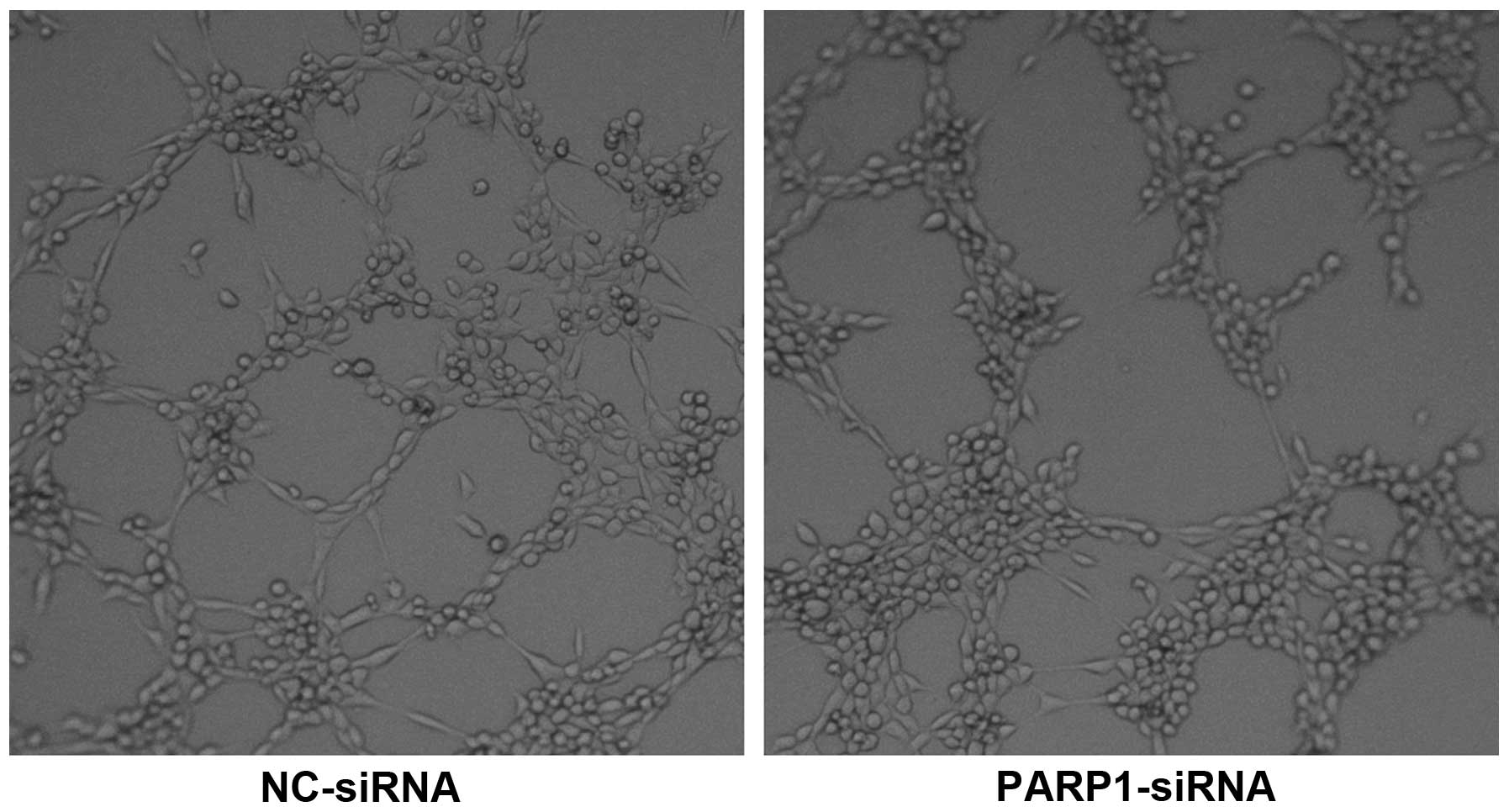|
1
|
Desai A, Xu J, Aysola K, Qin Y, Okoli C,
Hariprasad R, Chinemerem U, Gates C, Reddy A, Danner O, et al:
Epithelial ovarian cancer: An overview. World J Transl Med. 3:1–8.
2014. View Article : Google Scholar : PubMed/NCBI
|
|
2
|
Itamochi H: Targeted therapies in
epithelial ovarian cancer: Molecular mechanisms of action. World J
Biol Chem. 1:209–220. 2010. View Article : Google Scholar : PubMed/NCBI
|
|
3
|
Schiavone MB, Bashir S and Herzog TJ:
Biologic therapies and personalized medicine in gynecologic
malignancies. Obstet Gynecol Clin North Am. 39:131–144. 2012.
View Article : Google Scholar : PubMed/NCBI
|
|
4
|
Ocana A, Pandiella A, Siu LL and Tannock
IF: Preclinical development of molecular-targeted agents for
cancer. Nat Rev Clin Oncol. 8:200–209. 2010. View Article : Google Scholar : PubMed/NCBI
|
|
5
|
Rajesh M, Mukhopadhyay P, Godlewski G,
Bátkai S, Haskó G, Liaudet L and Pacher P:
Poly(ADP-ribose)polymerase inhibition decreases angiogenesis.
Biochem Biophys Res Commun. 350:1056–1062. 2006. View Article : Google Scholar : PubMed/NCBI
|
|
6
|
Langelier MF and Pascal JM: PARP-1
mechanism for coupling DNA damage detection to poly(ADP-ribose)
synthesis. Curr Opin Stru Biol. 23:134–143. 2013. View Article : Google Scholar
|
|
7
|
Horton JK, Stefanick DF and Wilson SH:
Involvement of poly(ADP-ribose) polymerase activity in regulating
Chk1-dependent apoptptic cell death. DNA Repair (Amst).
4:1111–1120. 2005. View Article : Google Scholar : PubMed/NCBI
|
|
8
|
Shunkwiler L, Ferris G and Kunos C:
Inhibition of poly(ADP-Ribose) polymerase enhances
radiochemosensitivity in cancers proficient in DNA double-strand
break repair. Int J Mol Sci. 14:3773–3785. 2013. View Article : Google Scholar : PubMed/NCBI
|
|
9
|
Krietsch J, Caron MC, Gagné JP, Ethier C,
Vignard J, Vincent M, Rouleau M, Hendzel MJ, Poirier GG and Masson
JY: PARP activation regulates the RNA-binding protein NONO in the
DNA damage response to DNA double-strand breaks. Nucleic Acids Res.
40:10287–10301. 2012. View Article : Google Scholar : PubMed/NCBI
|
|
10
|
Zhang J, Kan Y, Tian Y, Wang Z and Zhang
J: Effects of poly (ADP-ribosyl) polymerase (PARP) inhibitor on
cisplatin resistance & proliferation of the ovarian cancer C13*
cells. Indian J Med Res. 137:527–532. 2013.PubMed/NCBI
|
|
11
|
Pyriochou A, Olah G, Deitch EA, Szabó C
and Papapetropoulos A: Inhibition of angiogenesis by the
poly(ADP-ribose) polymerase inhibitor PJ-34. Int J Mol Med.
22:113–118. 2008.PubMed/NCBI
|
|
12
|
Livak KJ and Schmittgen TD: Analysis of
relative gene expression data using real-time quantitative PCR and
the 2(−Delta Delta C(T)) Method. Methods. 25:402–408. 2001.
View Article : Google Scholar : PubMed/NCBI
|
|
13
|
Gonçalves A, Sabatier R, Charafe-Jauffret
E, Gilabert M, Provansal M, Tarpin C, Extra JM, Viens P and
Bertucci F: Triple-negative breast cancer: Histoclinical and
molecular features, therapeutic management and perspectives. Bull
Cancer. 100:453–464. 2013.(In French). PubMed/NCBI
|
|
14
|
Salemi M, Galia A, Fraggetta F, La Corte
C, Pepe P, La Vignera S, Improta G, Bosco P and Calogero AE: Poly
(ADP-ribose) polymerases 1 protein expression in normal and
neoplastic prostatic tissue. Eur J Histochem. 57:e132013.
View Article : Google Scholar : PubMed/NCBI
|
|
15
|
Porcelli L, Quatrale AE, Mantuano P, Leo
MG, Silvestris N, Rolland JF, Carioggia E, Lioce M, Paradiso A and
Azzariti A: Optimize radiochemotherapy in pancreatic cancer: PARP
inhibitors a new therapeutic opportunity. Mol Oncol. 7:308–322.
2013. View Article : Google Scholar : PubMed/NCBI
|
|
16
|
Kim J, Pyun JA, Cho SW, Lee K and Kwack K:
Lymph node metastasis of gastric cancer is associated with the
interaction between poly (ADP-ribose) polymerase 1 and matrix
metallopeptidase 2. DNA Cell Biol. 30:1011–1017. 2011. View Article : Google Scholar : PubMed/NCBI
|
|
17
|
Rojo F, García-Parra J, Zazo S, Tusquets
I, Ferrer-Lozano J, Menendez S, Eroles P, Chamizo C, Servitja S,
Ramírez-Merino N, et al: Nuclear PARP-1 protein overexpression is
associated with poor overall survival in early breast cancer. Ann
Oncol. 23:1156–1164. 2012. View Article : Google Scholar : PubMed/NCBI
|
|
18
|
Ledermann J, Harter P, Gourley C,
Friedlander M, Vergote I, Rustin G, Scott CL, Meier W,
Shapira-Frommer R, Safra T, et al: Olaparib maintenance therapy in
patients with platinum-sensitive relapsed serous ovarian cancer: A
preplanned retrospective analysis of outcomes by BRCA status in a
randomised phase 2 trial. Lancet Oncol. 15:852–861. 2014.
View Article : Google Scholar : PubMed/NCBI
|
|
19
|
Choi JY, Jang KT, Shim YM, Kim K, Ahn G,
Lee KH, Choi Y, Choe YS and Kim BT: Prognostic significance of
vascular endothelial growth factor expression and microvessel
density in esophageal squamous cell carcinoma: Comparison with
positron emission tomography. Ann Surg Oncol. 13:1054–1062. 2006.
View Article : Google Scholar : PubMed/NCBI
|
|
20
|
Rau KM, Huang CC, Chiu TJ, Chen YY, Lu CC,
Liu CT, Pei SN and Wei YC: Neovascularization evaluated by CD105
correlates well with prognostic factors in breast cancers. Exp Ther
Med. 4:231–236. 2012.PubMed/NCBI
|
|
21
|
Wang L, Liu X, Wang H and Wang S:
Correlation of the expression of vascular endothelial growth factor
and its receptors with microvessel density in ovarian cancer. Oncol
Lett. 6:175–180. 2013.PubMed/NCBI
|
|
22
|
Li Q, Li M, Wang YL, Fauzee NJ, Yang Y,
Pan J, Yang L and Lazar A: RNA interference of PARG could inhibit
the metastatic potency of colon carcinoma cells via PI3-kinase/Akt
pathway. Cell Physiol Biochem. 29:361–372. 2012. View Article : Google Scholar : PubMed/NCBI
|
|
23
|
Quiles-Perez R, Muñoz-Gámez JA,
Ruiz-Extremera A, O'Valle F, Sanjuán-Nuñez L, Martín-Alvarez AB,
Martín-Oliva D, Caballero T, Muñoz de Rueda P, León J, et al:
Inhibition of poly adenosine diphosphate-ribose polymerase
decreases hepatocellular carcinoma growth by modulation of
tumor-related gene expression. Hepatology. 51:255–266. 2010.
View Article : Google Scholar : PubMed/NCBI
|
|
24
|
Claesson-Welsh L and Welsh M: VEGFA and
tumor angiogenesis. J Intern Med. 273:114–127. 2013. View Article : Google Scholar : PubMed/NCBI
|













